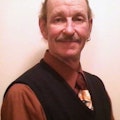Spray equipment distributor expects waterborne paint to be U.S. standard within a decade
As Dan-Am celebrates its silver anniversary as the American distributor for SATA Spray Equipment, the company anticipates that waterborne paint's market coverage will be uniform by the time Dan-Am reaches its emerald anniversary in a decade.
"Within 10 years waterborne will be the standard," declares Steve Treutel, Dan-Am's national industry relations/training manager. "Some markets (such as California) are jumping on it sooner than that."
Collision shops throughout the country are already dipping their oars in the water as they pursue these types of painting systems. "I'm hearing from all over," he reports, "which is exciting because that means they're making it work in warm conditions, cooler conditions and more-humid conditions."
In addition to California and its low-VOC mandates, waterborne is surfacing in Florida, Texas, the Northeast and the Great Lakes region. "That's really the buzz in the industry right now," he says.
The legendarily nippy Minnesota winters pose no detriment to waterborne paint performance, says Treutel.
"We close the door and turn the heat on," Treutel explains. "It's very dry and warm when the furnace is on."
Waterborne certainly has a beachhead in the Land of 10,000 Lakes at Dan-Am's recently expanded Spring Valley distribution headquarters. Waterborne has been floated as an automotive paint system throughout much of Dan-Am's 25 years in business. (The company discussed the trend following a recent anniversary celebration at its headquarters.)
By January of 2007, waterborne basecoats will be the law in Europe; Treutel estimates that close to 70 percent of the body shops there are already compliant. Expect solvent-based topcoats to remain standard for the foreseeable future.
"They're playing around with waterborne clears, but they're not ready for the aftermarket.
"Years ago, as an industry we tried to make waterborne work and the paint manufacturers said, 'We're not ready.' "
At this point, though, "finally the technology has caught up with the theories. Everybody is working to make sure they have every car color out there. There's been a major focus over the past five years of looking at our equipment and getting it ready," Treutel notes, citing strong sales surrounding the recently introduced SATA Jet 3000 spray gun, which handles both solvent-based and waterborne applications.
Stainless steel, nickel and chrome are among the metals used in construction. "Most guns today are made out of aluminum; if you put water and aluminum together you get corrosion." This new model "has a special chemical coating that prevents the inside from corroding," Treutel says.
The drying processes for waterborne are consistently becoming more effective from both a technological and financial perspective, he explains. "It is temperature and air movement" that makes the paint perform, and "we have a portable (drying) unit that keeps the cost down so shops can get into it inexpensively."
Working alongside SATA, offering extensive training programs for shop owners and painters is an ongoing priority at the company — which was founded in 1976 by Hans Jorgensen and his two sons Knud and Bent, who started an antique auto restoration business upon their emigration from Denmark. By 1980 Dan-Am had become SATA's sole U.S. distributor.
"We customize each and every class" based on the individual training needs of the students, Treutel says. A body shop owner can make direct arrangements, or the sessions can be facilitated through your favorite paint producer. "I've got every paint company calling me to set up programs."
About the Author
James Guyette
James E. Guyette is a long-time contributing editor to Aftermarket Business World, ABRN and Motor Age magazines.
